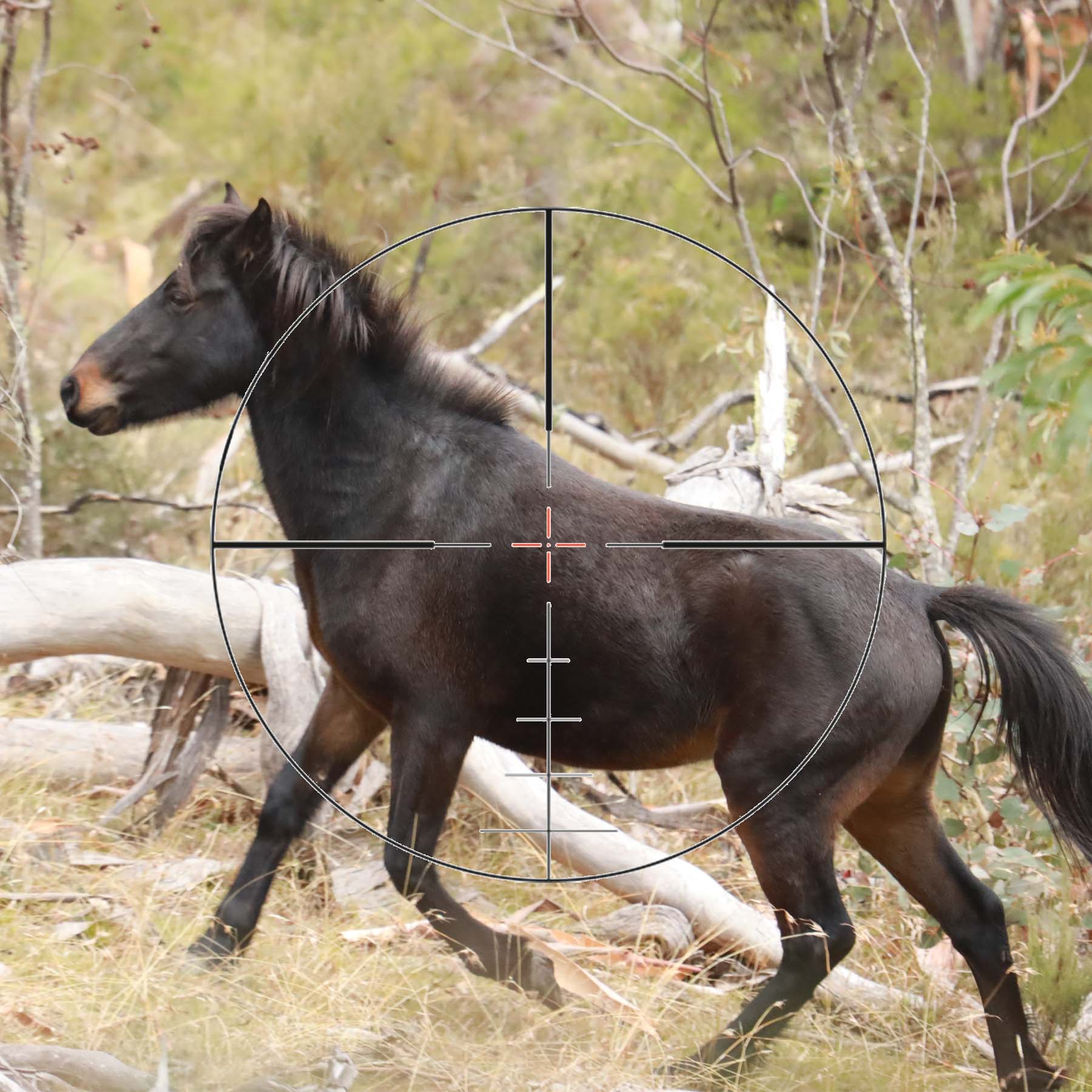Pumping bullet after bullet into a horse until it drops dead is the approved method of humanely killing brumbies during culls from helicopters in national parks, according to the standard operating procedures of the NSW National Parks and Wildlife Service.
It’s a method deemed humane by the RSPCA, which oversaw the shooting of 270 brumbies in Kosciuszko National Park last month, but it has been condemned by others who say larger calibre weapons should be used.
A NSW Parliamentary inquiry heard on Monday that during last month’s horse cull, which was a trial run for future ones, between three and 15 shots were fired into each of the horses killed, with an average of 7.5 shots fired per horse.
It led to Shooters, Fishers and Farmers Party (SFF) MLC Mark Banasiak asking that the state’s agriculture minister refer the matter to police.
His SFF colleague Robert Borsak called the outcome of the cull “an absolute embarrassment”.
WHY SO MANY SHOTS TO KILL A HORSE?
The centre of the issue is the fact that the NPWS aerial shooters are using .308-calibre ammunition which detractors say is not nearly adequate for animals the size of a horse.
Perhaps making up for a shortfall in the killing power of the rifles, the standard operating procedures specify “repeat shooting”, that is, firing at least two shots, and often more, into the animal as quickly as possible until it is killed or at least insensible.
Atticus Flemming, acting coordinator-general of the NSW Department of Planning and Environment’s Environment and Heritage section, told the inquiry, “repeat shooting does not mean a shot goes in and then we wait to see the impact of the shot. It means that there are multiple shots to the target area literally within seconds and that is an important component in ensuring the most rapid death possible.”
The shooters use semi-automatic rifles fitted with red-dot sights, and fire lead-free Sako 150gn Powerhead Blade ammunition.
There’s seems little doubt the shooters shoot well: the report produced after the cull states 98% of hits were to the thorax of the target animals (based on post-mortem inspections of 43 of the horses).
The report said the median time from first hit to death or insensibility was five seconds.
WHAT’S THE RSPCA GOT TO DO WITH IT?
The RSPCA was involved in providing advice to government on the standard operating procedures (SOP) employed in the cull, including the use of .308 rifles.
It oversaw the cull as an independent regulator and afterwards did not raise concerns nor cite any breaches of the Prevention of Cruelty to Animals Act, despite the apparent suffering of horses implied in the figures relating to the cull.
The RSPCA is a charitable organisation that receives substantial funding from the state government and at the same time is expected to act as a regulator, a situation that raised concerns in the inquiry about a conflict of interest.
Questioning of Mr Coleman seemed to indicate the RSPCA had no idea that there would be a significantly different outcome between shooting 60-100kg pigs and 500-600kg horses with a .308 rifle.
Under pressure to answer a question from Robert Borsak about the difference between shooting pigs and horses, Mr Coleman said, “the same firearm is being used, so the approach and the result is exactly the same.”
WHAT SHOULD HAVE BEEN DONE?
Appearing as a ballistics and firearms expert, Andrew Mallen of Australian Hunting International (AHI) said the RSPCA’s response after the cull “smacks of incompetence at best, and collusion and corruption worthy of investigation at worst”.
Mr Mallen said the average of 7.5 shots per animal was “deplorable”.
“It just makes a farce of any perceived animal welfare concerns that National Parks and Wildlife Service may have.
“The .308 Win is well suited for pigs and smaller animals but certainly not for horses and camels.”
He compared the .308 with a 9.3×62, which has a 33% increase in energy and creates a 60% wider wound channel — a combined effect produces exponentially greater effect than a .308.
“You’re going to kill the animal far more quickly with far less shots,” he said.
When asked if a larger calibre would be more humane, he answered, “Absolutely. No question.”
WHY ALL THE FUSS?
From a hunter’s viewpoint, seeing the NPWS and RSPCA apparently complicit in the inhumane killing of horses is galling since both organisations have a history of working against the interests of recreational hunters, often claiming hunters cannot be relied upon to kill humanely.
NPWS shooters have been painted as professionals who can be trusted to do a task that recreational hunters can’t be trusted with.
And yet, said Mr Borsak, “the NPWS produced a new standard operating procedure without any consultation or science as regards to ballistics.”
Culling is almost certain to go ahead, probably under the same SOP, as the NSW government tries to bring brumby numbers down from an estimated 12,000 or so to 3000.

0 Comments